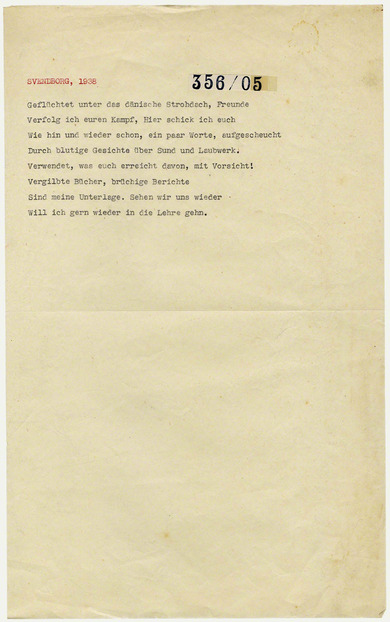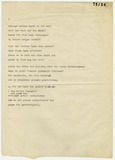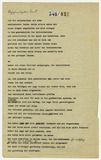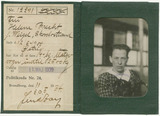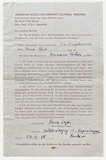Bertolt Brecht: Svendborg, typescript (1938)
Bertolt Brecht: Svendborg, typescript (1938)
Geflüchtet unter das dänische Strohdach, Freunde
Verfolg ich euren Kampf.[Refuged beneath this Danish thatched roof, friends
I follow your struggle.(ed. trans.)]
Bertolt Brecht, Svendborg, 1938
This poem comes from the collection, The Svenborg Poems, by writer Bertolt Brecht, which was published in Copenhagen in June 1939 under the title Poems in Exile. Besides observations concerning the political situation in Germany following the Nazi seizure of power, there are repeated references to his life on the run in Denmark, to the landscape and the house “under the Danish thatched roof”, in which he lived from 1933 to 1939 and which became a meeting place for many of his friends. It was a hospitable house in which the refugee Brecht sought an exchange with his friends from the time before the Nazis were in power who had also been forced to flee. The Marxist theoretician Karl Korsch, the economist Fritz Sternberg and the musician Hanns Eisler all visited him in Svendborg. Eisler, who later composed the music form many of Brecht’s poems while in exile in the USA, had already written music for several of the Svendborg Poems while in Denmark. The most important guest was the philosopher and writer Walter Benjamin, who stayed for several months at a time. After he committed suicide in the Spanish border town of Port Bou while on the run from the Gestapo, Brecht wrote: “TO WALTER BENJAMIN WHO KILLED HIMSELF / WHILE FLEEING FROM HITLER / Tactics of attrition are what you enjoyed / Sitting at the chess table in the pear tree’s shade / An enemy who could drive you from your books / Will not be worn down by people like us.” (Bertolt Brecht, To Walter Benjamin, who killed himself while fleeing from Hitler, 1941).

